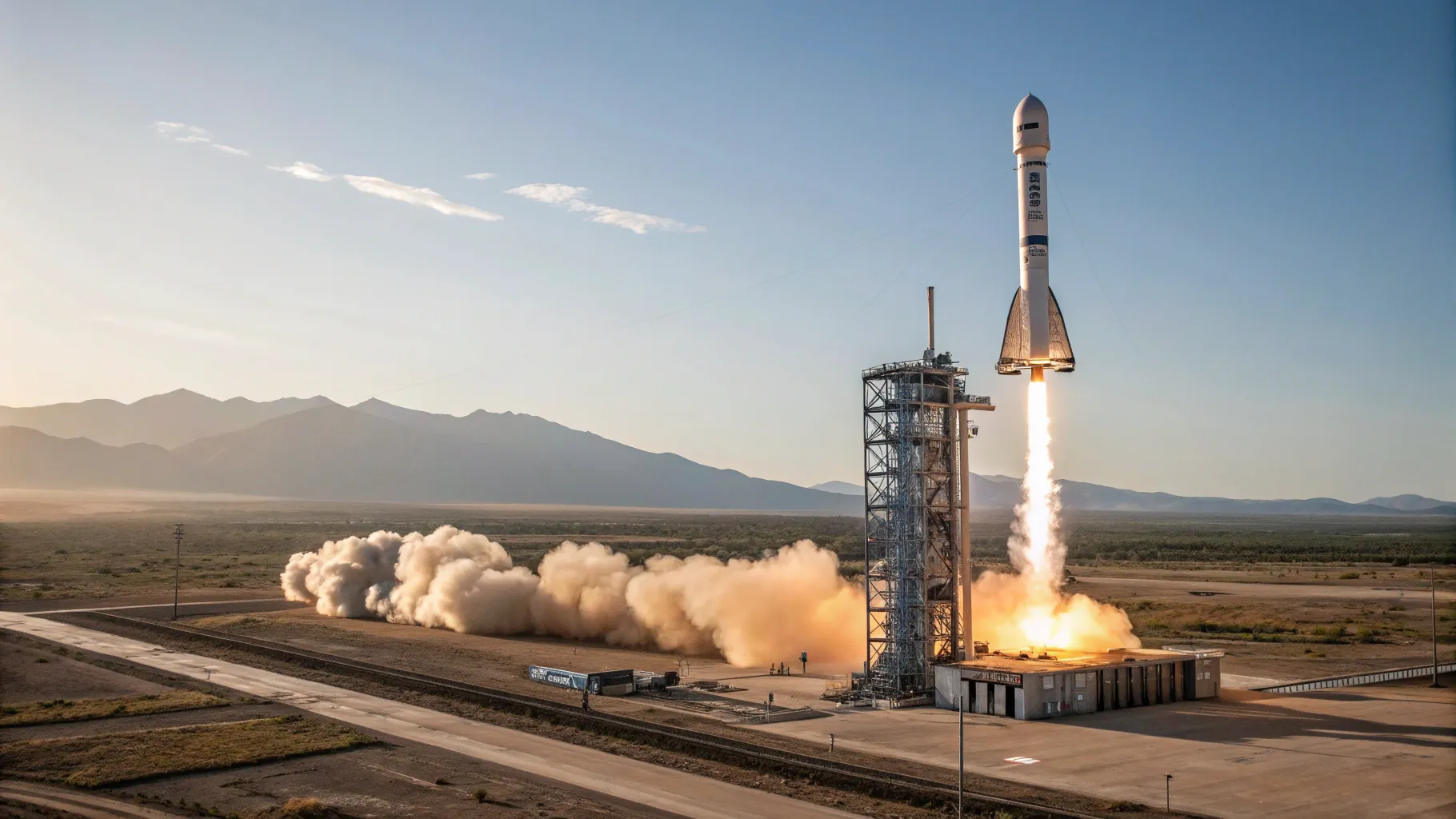Blue Origin has crossed a new mark in private spaceflight, logging more than 30 missions as the company advances its suborbital and orbital ambitions. Founded by Jeff Bezos and operating primarily from West Texas and Florida, the company’s latest tally signals steady activity in a sector where reliability, safety, and consistent access to space are under close watch.
The milestone comes as the commercial launch market grows and as space firms seek government contracts, tourism revenue, and cargo services. It also raises questions about what comes next: a shift from suborbital tourism toward heavier payloads and lunar work.
A Founder’s Space Ambition
Jeff Bezos created Blue Origin with a long-term vision to expand access to space and build an industrial economy off-world. The firm’s motto, “Gradatim Ferociter,” points to a step-by-step approach. That pace has shown in Blue Origin’s careful flight cadence and methodical testing.
“Bezos is the founder of rocket company Blue Origin, which has flown over 30 missions.”
The company’s early focus has centered on suborbital flights designed to carry research payloads and paying passengers. The progress reflects a business model that blends tourism, science, and technology development.
Flight Record and Safety
Blue Origin’s flight total includes a mix of crewed and uncrewed missions. Most have used the New Shepard system, which launches vertically and returns both booster and capsule for reuse. Repetition and recovery are essential to lowering costs and building trust among customers and regulators.
The company has faced setbacks. An uncrewed anomaly in 2022 prompted a pause and investigation. Blue Origin adjusted procedures and hardware, then returned to flight after addressing findings. Safety statements emphasize incremental changes, conservative margins, and thorough reviews before each mission.
For would-be passengers and researchers, two metrics matter most: consistent launch schedules and loss-free returns. More than 30 flights suggest the system is maturing, though each new payload and passenger set adds fresh validation pressure.
Market Pressure and Competitors
Blue Origin operates in a crowded market with different strategies. SpaceX leads orbital launches and cargo services. Virgin Galactic targets suborbital tourism with a carrier aircraft and rocket plane. Traditional aerospace contractors pursue government contracts under strict oversight.
Blue Origin is working to expand beyond short hops. Its forthcoming New Glenn rocket aims at heavy-lift missions from Florida. That move, if executed on schedule, could open revenue from commercial satellites and national security launches.
Government work is also in view. NASA selected Blue Origin to develop a crewed lunar lander under the Artemis program, highlighting confidence in its engineering path. That project will require tight coordination, on-time testing, and supply chain resilience.
Why the 30-Mission Mark Matters
- Repetition improves procedures, training, and turnaround times.
- Reusable hardware can lower mission costs and increase access.
- Consistent flight data helps inform safety and certification steps.
For researchers, frequent flights mean more opportunities to send experiments to microgravity. For customers, stable operations can reduce wait times and uncertainty. For Blue Origin, the record helps make the case for larger vehicles and more complex missions.
What Comes Next
Industry analysts will watch a few signals. First is the pace of suborbital operations through the next year. Second is progress on New Glenn, including stage testing and launch pad readiness. Third is how Blue Origin manages its workforce and suppliers amid parallel projects.
Policy and regulation could shape outcomes. Human spaceflight rules, environmental reviews, and range availability all affect schedules and costs. Partnerships with universities and research agencies may broaden the customer base and strengthen public support.
Blue Origin’s climb past 30 flights marks steady momentum, but the harder tests lie ahead. To meet its goals, the company will need reliable schedules, cost control, and clear safety records. If it delivers, the next phase could include regular suborbital service, competitive orbital launches, and a role in lunar missions. The coming year will show whether the step-by-step plan can scale to larger stages.







